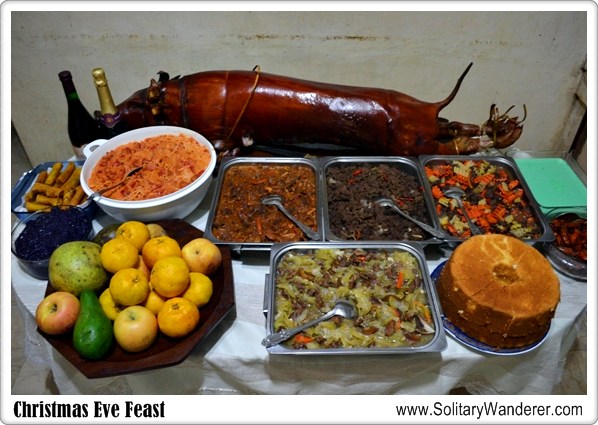This website uses cookies so that we can provide you with the best user experience possible. Cookie information is stored in your browser and performs functions such as recognising you when you return to our website and helping our team to understand which sections of the website you find most interesting and useful.
This was first published in Mabuhay (December 2013), the inflight magazine of Philippine Airlines.
Ding, dong, ding, dong, ding. The trill of the church bells draws me out of sleep, and I come wide awake immediately, knowing I don’t have much time to prepare. In a few minutes, my grandmother would rouse us up, bundling us in long sleeves against the cool dawn air. It’s December and time for simbang gabi, the dawn Masses that officially begins the Yuletide season.
In every town and every city in the Philippines, this scene from my childhood is replicated again and again. Christmas in the Philippines is a family affair, and nowhere is it more obvious than during misa de gallo (also called simbang gabi), when families troop to the church bleary-eyed but ready and excited to take part of this age-old tradition of celebrating Christmas.
Misa de gallo, which originally referred only to the midnight Mass held on Christmas Eve, is part of what makes Christmas season in the Philippines very special. It traditionally starts at 4am, hence its name, which literally means “Mass of the rooster.” Starting on December 16, it lasts nine days until the 24th, the night before Christmas.
Going to Mass so early is a way for Filipinos to show their devotion. It was also a way for the priests to make sure that farmers in the olden times get enough sleep first before going to Mass. However, piety is not the only reason for the sacrifice of going up so early in the morning. Misa de gallo has become part of tradition, a family bonding ritual that Filipinos all over the world celebrate during Christmastime.
Another enjoyable part of the tradition comes after the Mass. Right outside the church are stalls upon stalls selling all sorts of native delicacies, from bibingka and puto (rice cakes) to puto bumbong (purple sticky rice) and suman (glutinous rice). They are the family favorites for breakfast after Mass, and usually eaten with piping hot tsokolate (chocolate) or coffee at home.
Filipinos also see the simbang gabi as some sort of a magical ritual, a novena that if completed will grant wishes. Want to pass the Bar or board exam? Attend all nine days of simbang gabi and you’ll be set!
Simbang gabi starts so early because it was meant to encourage people to start the day with devotion before going off to work. Nowadays, however, a lot of parishes are already offering what’s called an anticipated Mass held in the evenings, usually at 8pm. It’s not the same, but it does serve its purpose of getting more people to go to church.
My grandmother and my father are gone now and I’m living far from home. Whenever I hear the church bells ring in the early dawn hours though, it always takes me back to memories of my childhood, when Christmastime meant family togetherness and love.
- Why Thailand Is a Great Destination for Solo Travelers - March 21, 2024
- 20 Absolutely Useful Tips For Backpacking Southeast Asia - July 30, 2023
- The Tale of Tonyo the Brave - June 14, 2022




2 Comments. Leave new
@ Mike: I always love hearing about Phoenix, Mike. Hope I’d get to meet him someday. He seems like a good kid 😉
I’ve mentioned to you before that one of my closest buddies is Filipino. He, his sister and their parents attempt to fly back over there each Christmas and I so love hearing about all of their traditions. That is so cool on the bells being that reminder for you. Btw…that plate of food at the top? If you ever have an extra seat at the table Phoenix and I will be there!! Well, he will have to sit off to the side 🙂